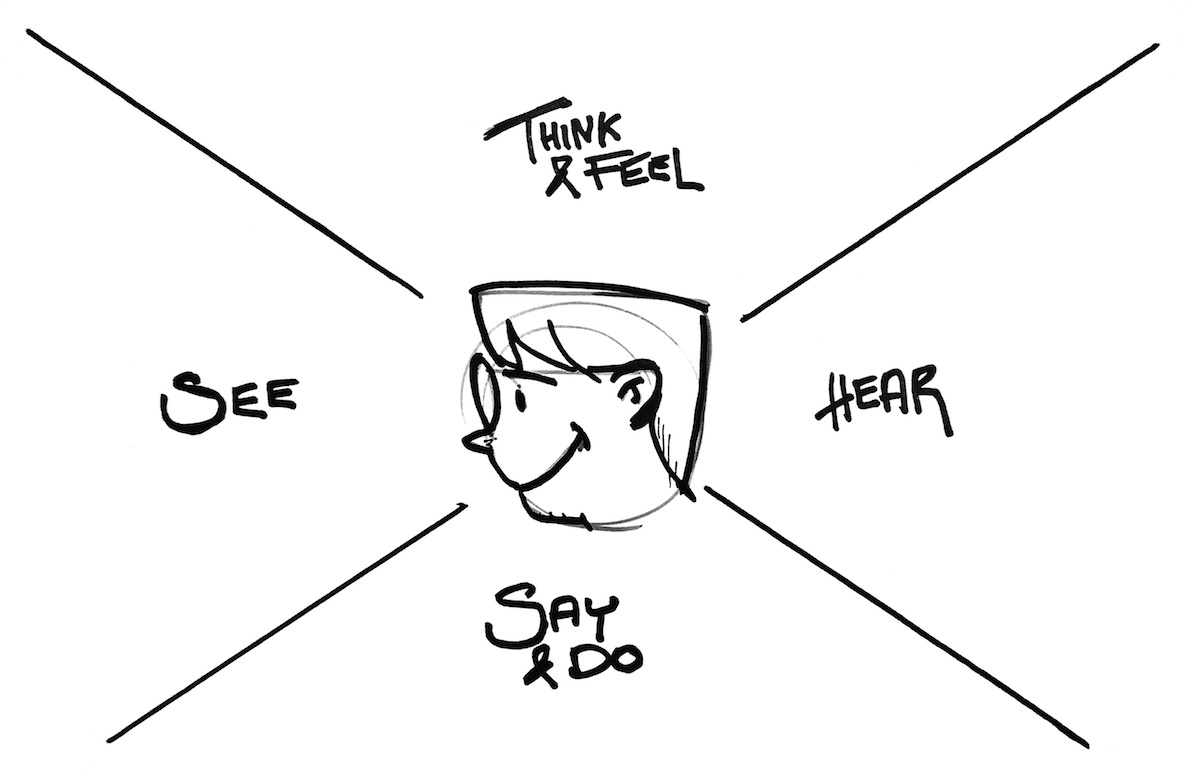Empathy Maps, Done Right

The main reason why we do audience research is to understand who will be using our product. We want to learn about their background, their needs, their likes.
Demographics and Personas have the downside to limiting us to a few facts about the audience – which might not always be applicable to our product: Why does it matter how many children our potential customer has?
A great way to go deeper, to cut out a slice of life of our audience stand-in, is an empathy map. The idea is to collect everything we know about the audience and sort it into 4 categories:

See
This is everything your audience member observes: Things that are happening on the street, in their social circle or on Youtube.
«My friend bought a shiny new dress»
Hear
This is things that other people are telling your persona – this counts for both influences from friends, family and colleagues as well as things that might hear on the news.
«She says the dress was 30% off on Amazon»
Think & Feel
Everything that happens inside them goes here – all emotions and perceptions and conclusions, every inner conflict:
«I do want a new dress, but it’s still really expensive.»
Say & Do
Whatever your audience member verablizes or takes into action goes here:
«I will wait until the end of season sale to see if I can get a cheaper dress»
An empathy map is a great exercise for a quick workshop: On a digital whiteboard, collect everything you know about them on sticky notes and sort them on the board, divided by these 4 categories.
You will quickly see patterns emerge and get a better idea of what their life and the influences on them might be like.
An empathy map can also help you to spot differences in perception of the audience: If two members of your team have a contradictory idea of your audience, you will spot it here. An example:
- “I love spending money on new clothes”
- “I want to live a more sustainable life”
If you haven’t tried it yet, give the empathy map a spin – what would your audience look like?
